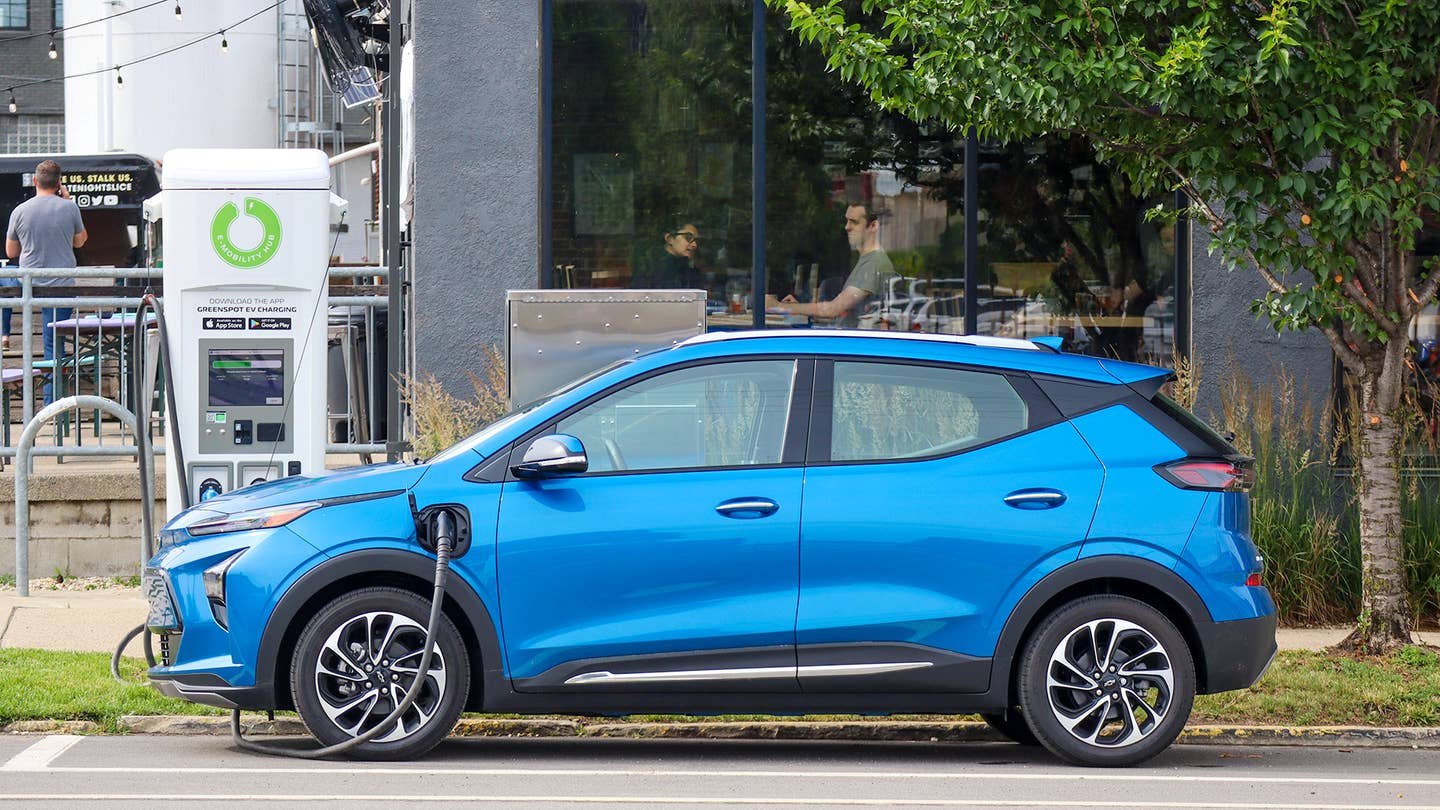How To Keep Your EV Charging Costs Down?
As electric vehicles (EVs) become increasingly popular, one of the main concerns for new and prospective EV owners is the cost of charging. While EVs offer significant savings compared to traditional gasoline vehicles, there are several strategies you can employ to further reduce your charging costs. From taking advantage of off-peak electricity rates to maintaining your vehicle for optimal efficiency, understanding and implementing these cost-saving measures can make a big difference.
This guide will provide you with practical tips on how to keep your EV charging expenses as low as possible, helping you to maximize the benefits of your electric vehicle.

How Much Does EV Charging Cost?
The cost of charging an electric vehicle (EV) varies based on several factors, including the type of charger used, the location, the cost of electricity, and the vehicle's battery capacity. Here’s a detailed breakdown:
Types of chargers
Level 1 Charging (120-Volt AC):
- Charging Speed: Slow (2–5 miles of range per hour)
- Cost: Typically included in household electricity bills.
- Example: If your electricity rate is $0.13 per kWh and you need to charge a 60-kWh battery from 0% to 100%, it would cost about $7.80.
Level 2 Charging (240-Volt AC):
- Charging Speed: Moderate (10–20 miles of range per hour)
- Cost: Usually $0.10 to $0.30 per kWh.
- Example: At $0.20 per kWh, fully charging a 60-kWh battery would cost $12.
DC Fast Charging (Level 3):
Charging Speed: Fast (60–80 miles of range in 20 minutes)
Cost: Typically $0.30 to $0.60 per kWh.
Example: At $0.50 per kWh, fully charging a 60-kWh battery would cost $30.
Location-Based Costs
Home Charging:
- Cost: Depends on local electricity rates, usually $0.10 to $0.20 per kWh in the U.S.
- Convenience: Most cost-effective for daily charging.
Public Charging Stations:
- Cost: Varies widely; some are free, while others charge premium rates.
- Membership Plans: Some networks offer subscription plans that can lower per-kWh costs.
Superchargers (for Tesla):
- Cost: Generally, it is $0.28 per kWh, but it can vary by location.

The cost of charging an electric vehicle (EV) or plug-in hybrid is influenced by several factors, including the location of the charging, the time of day, the type of infrastructure used, and the electricity rates.
- Charging Location: You can choose to charge your vehicle at home or at a public charging station. Generally, home charging is more affordable compared to public stations.
- Electricity Price: The cost per kilowatt hour (kWh) varies significantly across Switzerland, depending on the region and electricity provider. The Federal Electricity Commission projects an average household electricity price of CHF 0.32 per kWh for 2024, with prices in some regions potentially exceeding CHF 0.50 per kWh.
- Time of Charging: Some electricity suppliers offer lower rates during specific times of the day. Charging your vehicle during these off-peak hours, such as at night, can help reduce costs.
- Charging Modes: Switzerland offers various types of charging stations, including standard household sockets, standard public charging stations, and fast charging stations. While fast charging stations provide quicker charging times, they are more expensive compared to standard charging stations.
- Charging Cards and Memberships: Some charging stations require the use of charging cards or memberships. Be sure to check and understand any associated costs before registering.

As an EV driver, here are the top things you can do to lower the cost per mile of charging your car:
- Drive-in recuperation mode: one of the best things about an EV is the ‘one pedal driving’ mode. Recuperation or regenerative braking means you’re sending energy back to the battery when you slow down or head downhill.
- Avoid the last 20%, in and out: The first and last parts of a battery take the most energy to charge. Avoid running your battery down and set it to stop charging at 80% unless you need the range for a longer journey. This is great for battery health, too.
- Take advantage of free charging – Some places still offer free charging for a short time. You can charge for free while you shop with Tesco.
- Keep your battery cool: EVs have lithium batteries, which don’t like to overheat. Avoid charging in direct sunlight if you can. Park in the shade or store your electric car in a car port or garage when it’s really hot.
- Consider solar on your roof: If your car is at home during the day, installing rooftop solar PV gets you the greenest and cheapest energy out there. The prices of solar panels have dropped considerably, so it’s worth getting a quote now even if you’ve ruled out solar in the past. Check the impact of solar in our free energy assessment to calculate your payback from installing solar.
- Maintain your vehicle: As with any vehicle, even basic maintenance, like checking your tire pressure, can make a difference to your range. You’ll usually find the recommended pressure on the inside of the car door.
- Slow down: You won’t believe the difference that dropping a bit of speed makes to your miles per kWh.

Charging Network Accessibility:
- Network Coverage: Not all areas have extensive EV charging networks. Urban areas typically have more options than rural areas.
- Interoperability: Some networks require specific apps or cards. Ensure you have access to multiple networks for convenience.
Incentives and rebates:
- Government Incentives: Various governments offer rebates, tax credits, or incentives for installing home charging stations or using public charging infrastructure.
- Utility Programs: Some utility companies provide incentives or discounts for EV charging, especially during off-peak hours.
Battery Degradation:
- Charging Habits: Frequent use of DC fast charging can accelerate battery degradation. Balancing between fast charging and slower home or Level 2 charging can help maintain battery health.
- State of Charge Management: Keeping the battery charged between 20% and 80% can extend battery life.
Future Technologies:
- Wireless Charging: Emerging technology allows for wireless charging pads, which might be more convenient but could come at a higher cost.
- Vehicle-to-Grid (V2G): This technology enables EVs to supply power back to the grid, potentially earning you money or credits from utility companies.
How can I find affordable public charging stations?
Use apps like PlugShare and ChargePoint to find free or low-cost stations. Join networks with favorable rates and benefits that suit your charging needs.
Are there any incentives or rebates available for EV charging?
Look for federal and state tax credits for EVs and home charging equipment, and check with your utility provider for rebates on home charger installations.
How does the time of day affect my EV charging costs?
Charging during off-peak hours, typically late at night or early in the in the morning, can significantly reduce costs, as many utilities offer lower rates during these times.
What are the benefits of employer-provided charging stations?
Employer-provided charging can offer cost savings through free or subsidized rates and provide the convenience of charging at work, ensuring your EV is ready for your commute.
Lowering your EV charging costs is not only about finding the cheapest electricity rates but also about adopting smart charging habits and taking advantage of available resources. By driving efficiently, utilizing free or low-cost charging options, and maintaining your vehicle properly, you can significantly reduce your overall expenses. Additionally, considering investments like rooftop solar panels can offer long-term savings and environmental benefits. With these strategies, you can enjoy the convenience and eco-friendliness of your EV while keeping your charging costs to a minimum.
Click on the following link to read another blog post: What Is One Pedal Driving?















